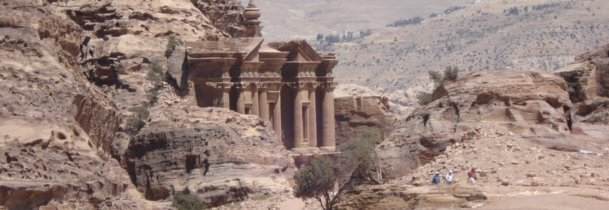
Most of you are familiar with Petra, even if you do not know. It is often featured in pictures and it was the backdrop for “Indiana Jones and the Last Crusade.”
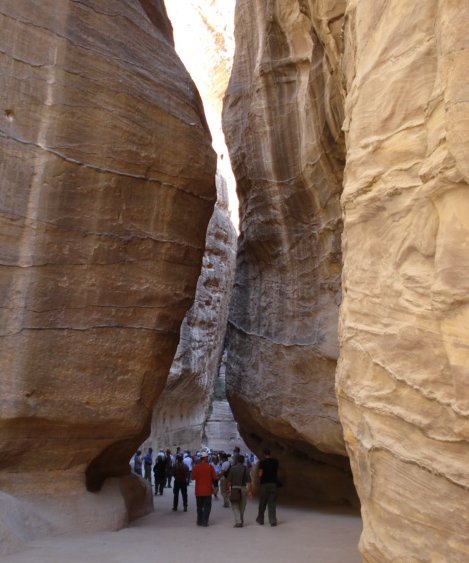
You get to Petra down a long narrow gorge long ago carved by the action of water. Petra was an important & prosperous trading center until trade routes shifted. An earthquake that damaged the water distribution system ensured its continued decline. Eventually, most of the people wandered off and leaving the site to Bedouins. The Bedouins are still there, offering donkey & camel rides and selling various trinkets. Their goats wander the neighboring ridges, picturesquely destroying the local vegetation.
Seeing the Petra ruins is an all day trip. Of course, you could spend years exploring the whole complex and visiting all the side structures. We climbed a couple. There were mostly large, cavernous spaces. Tomb raiders have long since cleaned out anything of value. Some of the climbs are difficult and probably dangerous. Take a look at this steep climb and rickety bridge.
On the plus side, the rocks in the region are some kind of sandstone, which stays rough and provides a good gripping surface for walking. The rocks in Athens were some kind of marble or alabaster. It got very smooth and slippery.
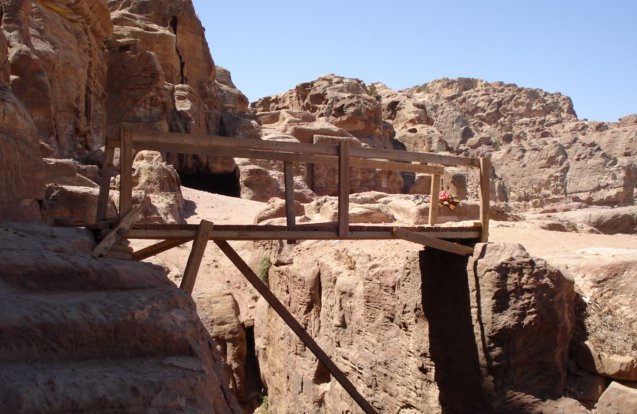
The hardest part of the trip is from the main area up to the monastery. It is a steep climb that takes around 45 minutes. The Bedouins offer donkey rides up. I would not want to ride the stinky animals nor would I trust them not to hurl me into the abyss. They seem ornery and nasty. I know they are supposedly sure-footed, but I prefer to be on my own feet.
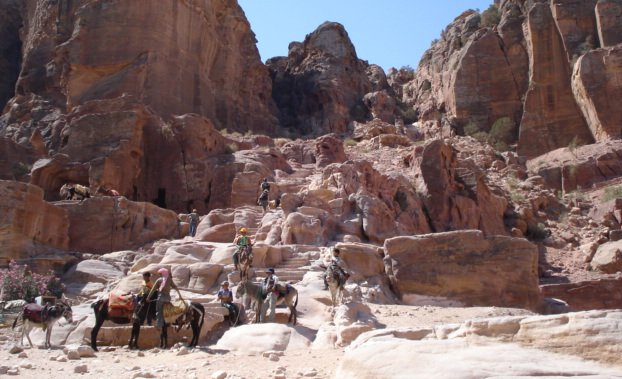
It is a hike with many beautiful views and well worth the effort. You have to get out of the way as the donkeys come down.

The Romans controlled the place for around 500 years. Say what you will about them, the Romans built to last. Even at this edge of their world, there are roads that are still useful after all this time and there is evidence of their good government. BTW, Chrissy asked me when the Byzantines took over from the Romans, as we visited a Byzantine church. Of course, the Byzantines WERE the Romans, the Eastern Roman Empire just transitioned. There was no clear break for them. The Byzantines called themselves Romans until the fall of Constantinople in 1453. The term “Byantine” is a 19th Century creation.
The picture on the left shows the treasury at Petra. This is the part of the city that is generally shown on all the pictures. It is literally carved out of the rock.
The Nabataeans, who made these structures, were tolerant and eclectic. They mixed and matched their cultural influences and probably were themselves a diverse people, typical of one sitting on trade routes and so actively engaged in commerce, with a Semitic/Arab base. They left no significant literature and not even inscriptions on their buildings, which makes it hard for historians to categorize them. This makes then a sort of stealth people and the mystery appeals to some.
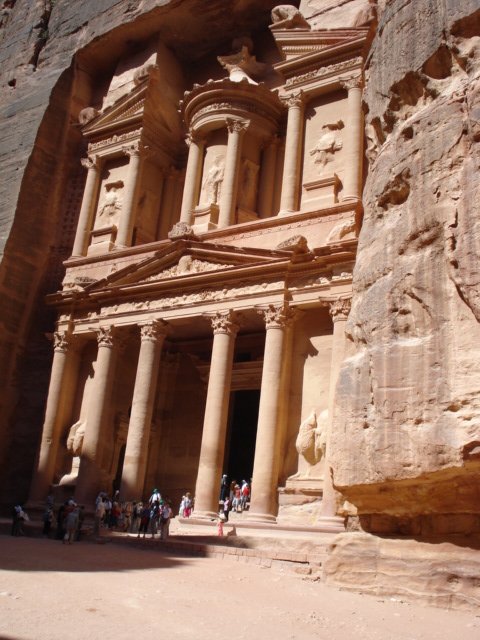
In structure on left, as in most others, you can see influences of the Greeks, Romans, Persians & Egyptians. Of course, the shapes and types of rock face dictated some of the forms.
On the way back out through the gorge we saw why you might not want to ride the horse carts. As we came in the passage, we saw a driver having trouble with his horse. We noticed, but didn’t think too much about it. When we were about half way up, we heard the sound of hoofs coming behind. It was the same cart – cart # 3 – careening until semi-control, with too terrified Japanese tourists hanging on for dear life, not having a wonderful day. I bet they never rent another horse and buggy.
Below shows what these horse carts look like.
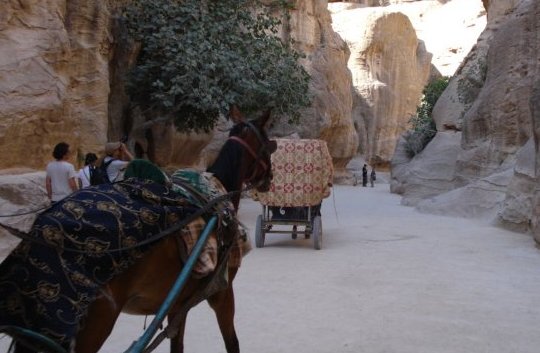
I will let this link explain re history of the place. There are a few inaccuracies in the link. For example, Pompey was not a Roman emperor, but the site does a good job with other background.
